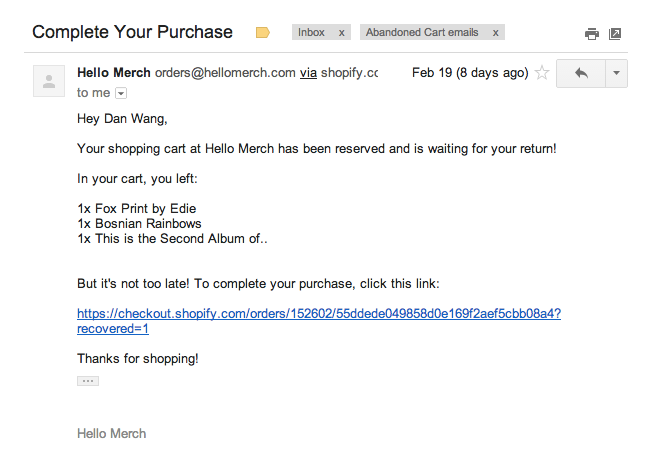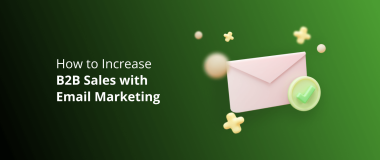Email marketing is an excellent way to engage your subscribers and target customers, whether that’s a notification about a new blog post or an update on your products/services and niche.
But, what if you want to run an email marketing campaign? Would each one of your subscribers receive the same email, or will you need to segment those that receive the emails from the campaign?
Your new subscribers would only get your latest email message. And they’ll only see the messages that you send afterwards and not your carefully crafted messages from the email campaign that is intended for people that have already opened and engaged with your messages.
The solution to this problem is called drip marketing. It is also called automated email marketing, scheduling emails, and email response automation. Setting up a drip marketing campaign can be troublesome at times, that’s why we broke down all the basics to prepare you for your upcoming email marketing campaign.
Related: How Does Marketing Automation Work? A Beginner’s Guide
Drip Marketing, What Is It?
Drip marketing consists of an automated set of email messages that are sent after the subscriber completes an action or are scheduled to be sent after a given period of time. Each of the email messages in your drip campaign is pre-written and you don’t need to sit at your computer and type the email message for the next segment of your campaign.
With the right tool, you can even personalize the messages to be sent with the receiver’s name, company and more.
Related: [Infographic] 24 Fundamental Email Marketing Stats
Your drip marketing campaign should be all about sending your messages when it’s the best time for them to be received.
For example, if someone subscribed moments ago, an automated welcome email can be sent immediately. The next week, the person can receive an email that will notify him/her about your blog’s most-read content. Maybe that person also opened your ‘Services’ page and for that reason, he/she will receive an email with a discount on your services.
This works because not everyone is ready to buy from you from the first moment of contact. You need to nurture your leads while they make their decision. The campaign itself may take months, and you’ll have to ensure that you give the prospect what he/she wants and when he/she wants it.
The best thing of all in drip marketing is that this can all happen automatically. You can set specific drip campaigns for educating your subscribers, help them land on your product page, offer them special deals and more. An attentive drip campaign is an ideal way to make one think of your brand and speed up the sales process.
Why You Need to Use Drip Marketing
Drip marketing can be used for several different marketing approaches. The main goal of each approach is the same: to nurture your best leads and keep them in your sales funnel.
Lead Nurturing
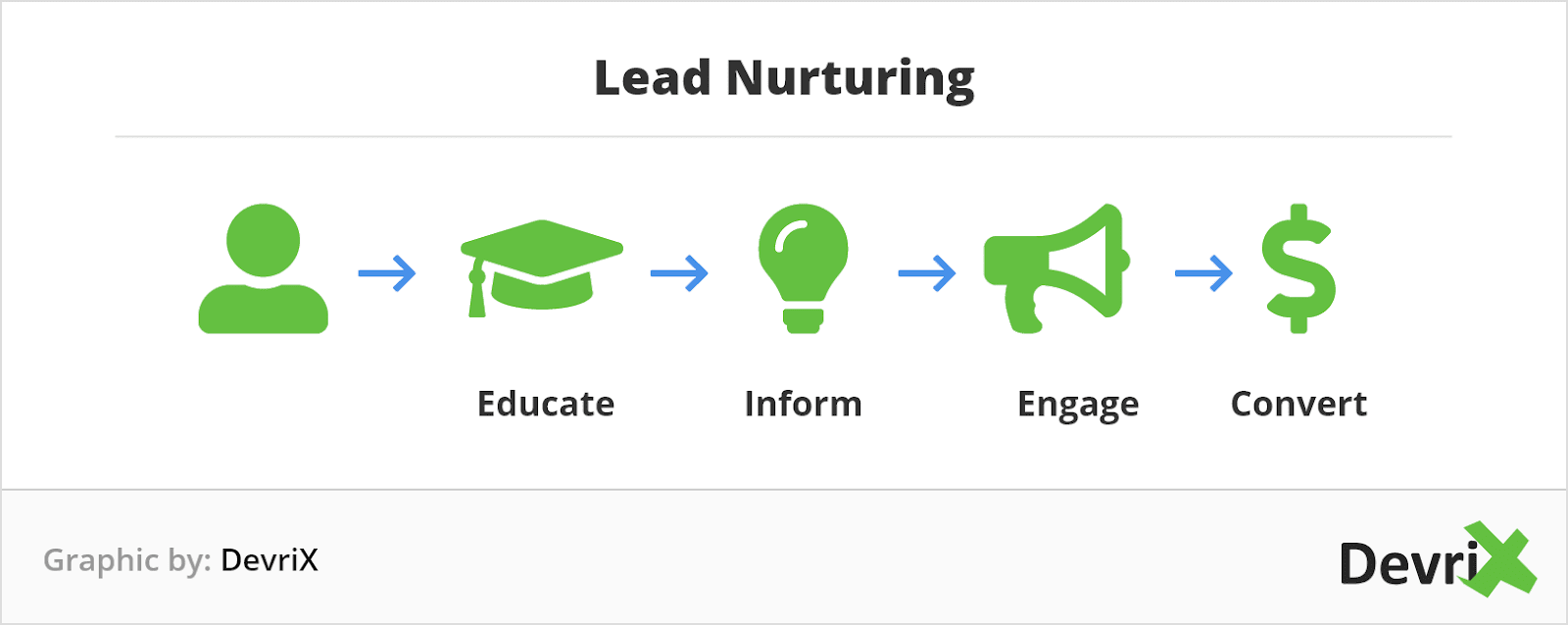
Leads are people that can benefit from buying your product/opting for your services. But, they might need an additional push to do it. This is called lead nurturing – educating and guiding your best prospects until they’re prepared for purchase.
Lead nurturing can appear in many shapes. You can provide users with educational content, help them use a product or offer demos and free trials, as in the example below.
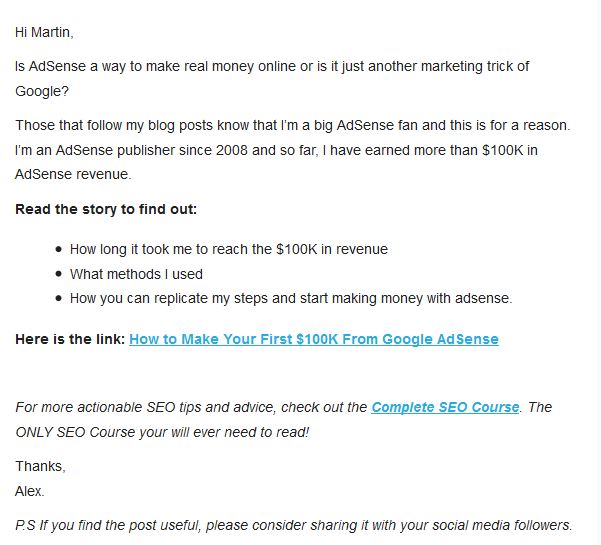
Up to 79% of the top performing B2B companies use drip campaigns to nurture their leads. They use drip marketing to welcome, onboard and engage leads in order to nurture them successfully and prepare them to become valuable customers.
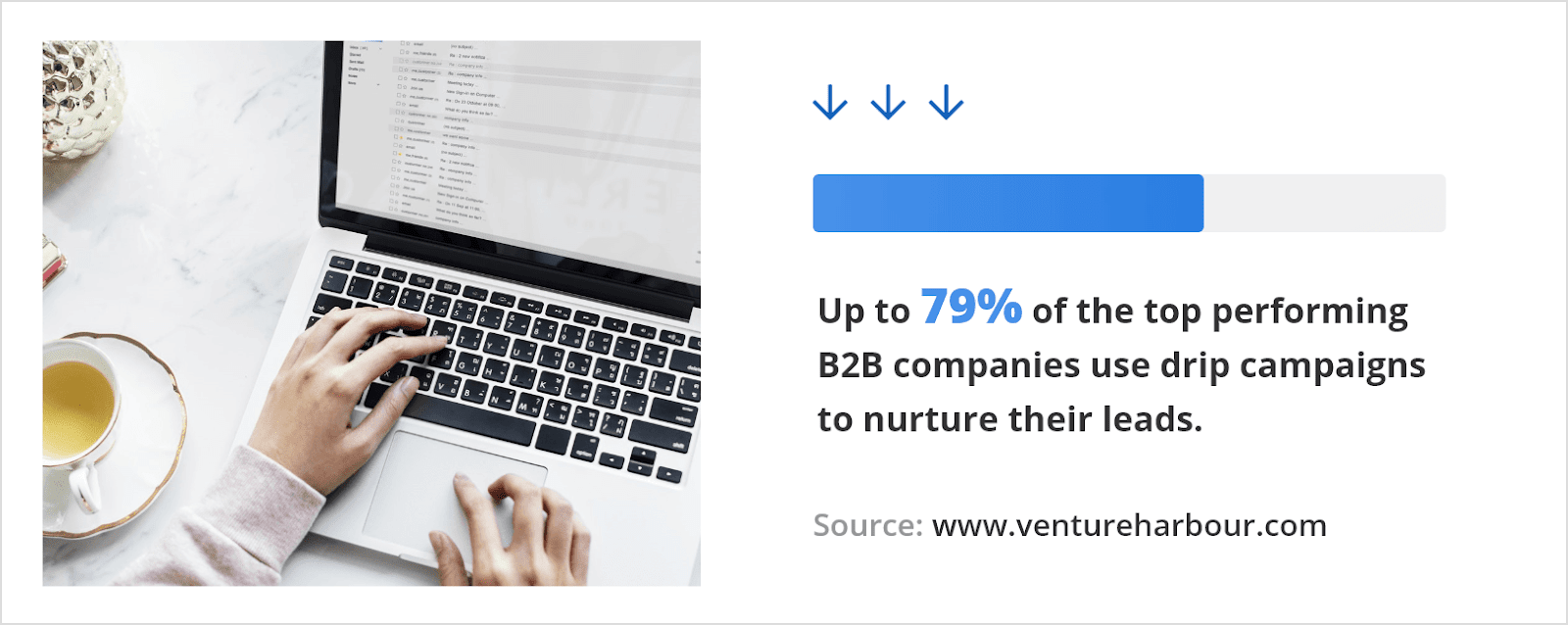
Related: 7 Effective Lead Nurturing Strategies to Boost Your Sales
Saying Welcome
You’ve successfully attracted the prospect to subscribe to your email list. Now what? How do you plan to make this person interested in your product?
Your best bet is to say ‘Welcome’ first. This is where the automated welcoming email steps in. It acts as a quick intro to your brand, your most read content and preview of what the user can expect from your future messages. Example:
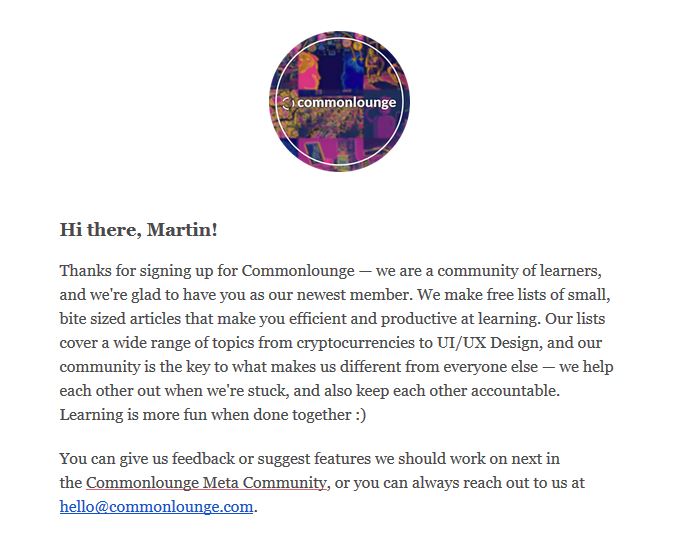
Up to 320% more revenue is attributed to welcome emails than other promotional email messages. It’s an excellent way to present your brand and you won’t get a second chance to make a good first impression in someone’s inbox. Follow email best practices and make a remarkable introduction to your list.
Onboarding
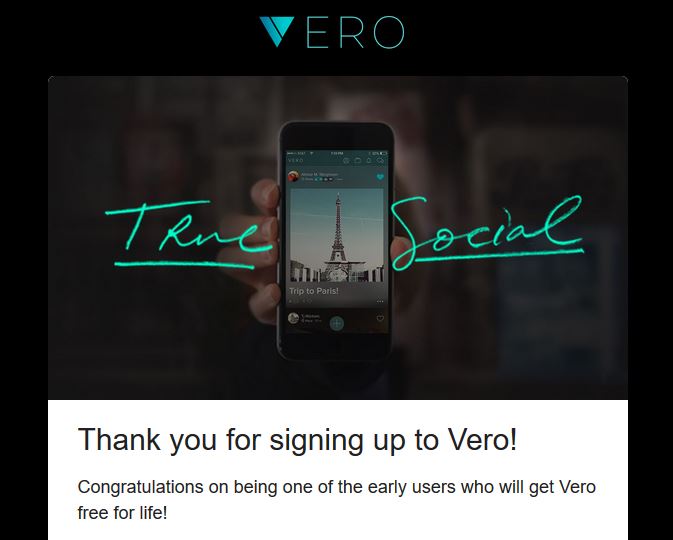
Free trials and demos are excellent, but what about actually convincing your subscribers to sign up for your service?
Again, a drip campaign can execute the onboarding process for you. Synchronized with the rest of your newsletters, you can have automated onboarding email messages that offer users suggestions to get them to start using your product.
These suggestions can appear in the form of signing up to start a product trial, asking from subscribers to download an app or software and/or opt for a premium package if they’ve already used the free trial of your product.
Sleeknote increased their engagement up to 1213.3% with onboarding email messages. This shows how effective automated onboarding campaigns can be. With the right drip strategy, you can increase your email engagement rate just like Sleeknote did.
Shopping Carts Abandonment
A big success for an e-commerce business is when you finally convince the user to click that ‘Add to Cart’ button. But, the job is still not done. Until the user clicks ‘Buy’, he/she can abandon the shopping cart and completely forget about the purchase. If you look at the abandonment rate in each sector, you can see that abandoning shopping carts is more common than you might think.
With the help of drip email, you can again engage with the person that decided to leave the shopping cart and move on to other pages. When the user leaves the cart, you can automate a message that will validate that the cart is still accessible. Example:
Abandonment emails can be incredibly effective when it comes to closing the sale. In fact, nearly half of these emails are opened and more than a third of them led directly to a sale. It a tactic that is effective and easy to automate so it simply can’t be missed by e-commerce businesses.
Endorsement and Suggestions
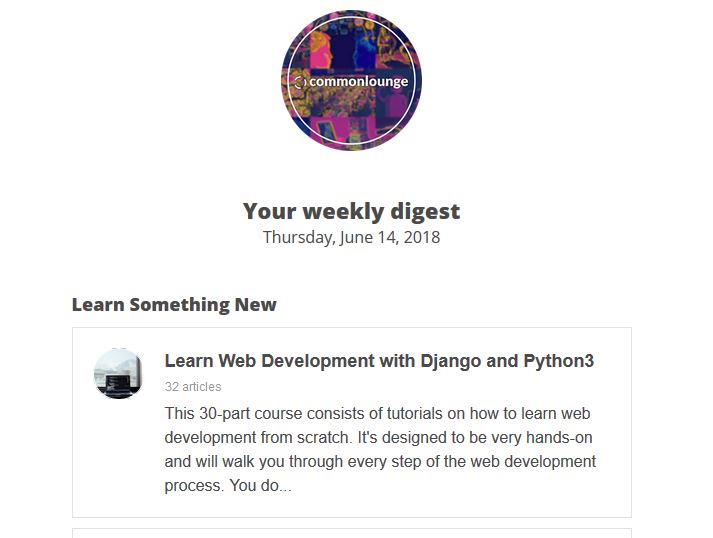
How many times have you seen “You might also like to read…” or “Recommended…” in your emails messages?
It is one of the major linchpins that companies use to keep their users engaged via email. If you’ve researched your target persona and you follow where your email subscribers go on your page you’ll know what else to offer or recommend them in your message.
For example, if you buy a fitness device on Amazon from Asics, they can send you an email message with other affordable products from the brand plus a discount because they already know that you have already interacted with their products.
You can develop these campaigns and target the users that purchased from your page with the help of drip marketing. You can also segment users based on the pages that they visit the most or the content that they’re most interested in when they’re on your page.
Related: WordPress for Ecommerce: 10 Things You Need To Know
Verifications

Drip marketing does not end when the users purchase or sign up for a subscription. You can also automate a “Thank You” message after they’ve purchased or subscribed and include new links and better offers in your email.
If you’re an e-commerce business it’s always the right thing to send them the receipt and attempt an upsell with a bundle of products at a discount. In your verification message, you should always attempt to re-engage and maintain the relationship with your customers/subscribers.
Interaction
It is a no-brainer that if the more a user visits your website more and stays longer, the bigger are the chances that he/she will become your customer. With drip email messages you can constantly invite the subscriber to visit your website and browse your content and offers. This can be automated and triggered by page activity or inactivity. For instance, if the user hasn’t been on your page in a week or so.
With the right drip software, you can also automate emails that will be sent to remind the user that he hasn’t logged on to your app or software in a while, such as Duolingo’s daily reminders for people that use their app to learn languages.
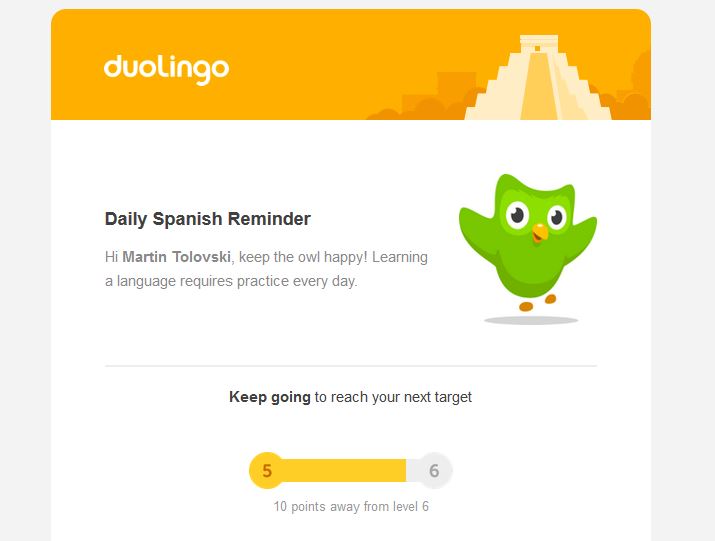
Unsubscriptions
Drip marketing can help you with even the most devastating act of all email marketing – the unsubscriptions. You can think about the reasons why someone unsubscribed or you can use drip email to pull them back in.
You should say “I’m sorry to see you go”, although you could also offer them a better deal with an automated email. You can offer them an email once per week or once per month or suggest continuing your relationship elsewhere, for example, on social media.
Setting Up Drip Campaign
Setting up a drip marketing campaign is not as complicated as it sounds. You’ll just need the following steps to prepare:
1. Send to a Targeted Audience

If you don’t have a niche audience that you can send your drip emails to, your campaign won’t be successful at all. The first and most crucial piece of every marketing puzzle is your target audience. You need to decide on the audience and where you’ll send your messages as well as the triggers used to start the drip campaign.
Related: The Complete Guide to Finding Your Target Market
For example, when a target user subscribes to your email list you can have an automated welcome email. After a purchase, you can send a receipt along with the product delivery map. When someone downloads your app you can automate a sequence of tutorial emails. When a user has subscribed to your list but hasn’t opened an email since, you can automate a message that will ask if he/she needs some help, etc.
2. Create the Messages

When you know who you’ll send to, you need to start developing messages that can grab the user’s attention in seconds. You need to think about the actions that you want the user do to after you sent the message or after he/she lands on the site.
Related: What Your Technology Website Needs To Convert Leads Like a Revenue Machine
When you write your messages, remember to be concise and engaging while actionable at the same time. Keep your brand voice and don’t push your audience to unsubscribe with annoying too-salesy messages. You need to have welcoming messages, messages that deliver the latest content, messages for a bundle of offers and messages that can close the sale.
3. Designing the Drip Campaign

You need to know what your campaign will look like from the welcome email all the way to the purchasing and support messages. You need to also know what you want to achieve with your drip campaign and how you’re going to measure your most important metrics for success.
Think about the number of messages and their frequency from both your point of view as well as your customers. Consider if you need to provide more or less content to the target user and if the order of your email messages can support the required send frequency.
Make sure that you also align your messages with your triggers. Your customer wouldn’t be happy if he/she receives an overly-salesy pitch immediately after subscribing to your list. Make sure that each part of your campaign is aligned perfectly with the trigger.
4. Kick-Off the Campaign

When you know what your campaign will look like and you’ve prepared your messages, you need to press the ‘Start’ button. The best way to start and track your drip campaigns is by implementing the right tool:
Before you decide on your drip marketing tool, evaluate your budget and the options of every one of them to find the solution that fits your campaigns the best.
Measuring and Evaluating Drip Campaigns

After you go through all the processes of carefully selecting an audience, planning your campaign and picking a tool to start the drip marketing process, you’ll want to see some results from your campaign. It is crucial to keep track of important metrics that will help you improve your campaign results.
Related: How to Track Website Traffic with Digital Marketing KPIs
- Open Rate – How many people opened your drip message? The average email open rate, depending on your industry, varies from 15.22% to 28.46%. If you notice lower open rate for your drip emails think about the time of sending, subject lines and other elements that might put subscribers off. Do A/B test variations and see what works best for your open rate.
Open Rate = Emails Opened / Emails Sent – Emails Bounced
- Reply Rate – How many subscribers reply on your drip emails? If someone replies with the desired answer it means that your email copy is on point and the person is ready to move on to the next stage of the drip sequence. High open rates combined with low reply rates can signal that you promise a lot in your subject line but under deliver in the copy. It can also mean that your copy is too long or you haven’t personalized your message enough to be valuable enough to reply to.
Reply Rate = People Who Replied / Emails Sent – Emails Bounced
- Bounce Rate – How many users didn’t even receive your message? This can happen if they’ve subscribed with a fake email address or you’ve misspelled their username. If you have a high bounce rate it is time to review your list and see which contact are really genuine on your target list.
Bounce Rate = Bounced Emails / Total Recipients X 100
Wrapping Up
By now you should be equipped with all the basics of successful drip marketing. An automated email campaign has the power to significantly increase your email conversion rate and bring in more customers in the process. The best drip campaigns are a combination of tools, timing, copy and UX, and only those email messages can break through all the noise in your prospect’s inbox.
Use this article as your starting point and keep analyzing every step of your campaigns. With the right processes in place, the only way is forward.


